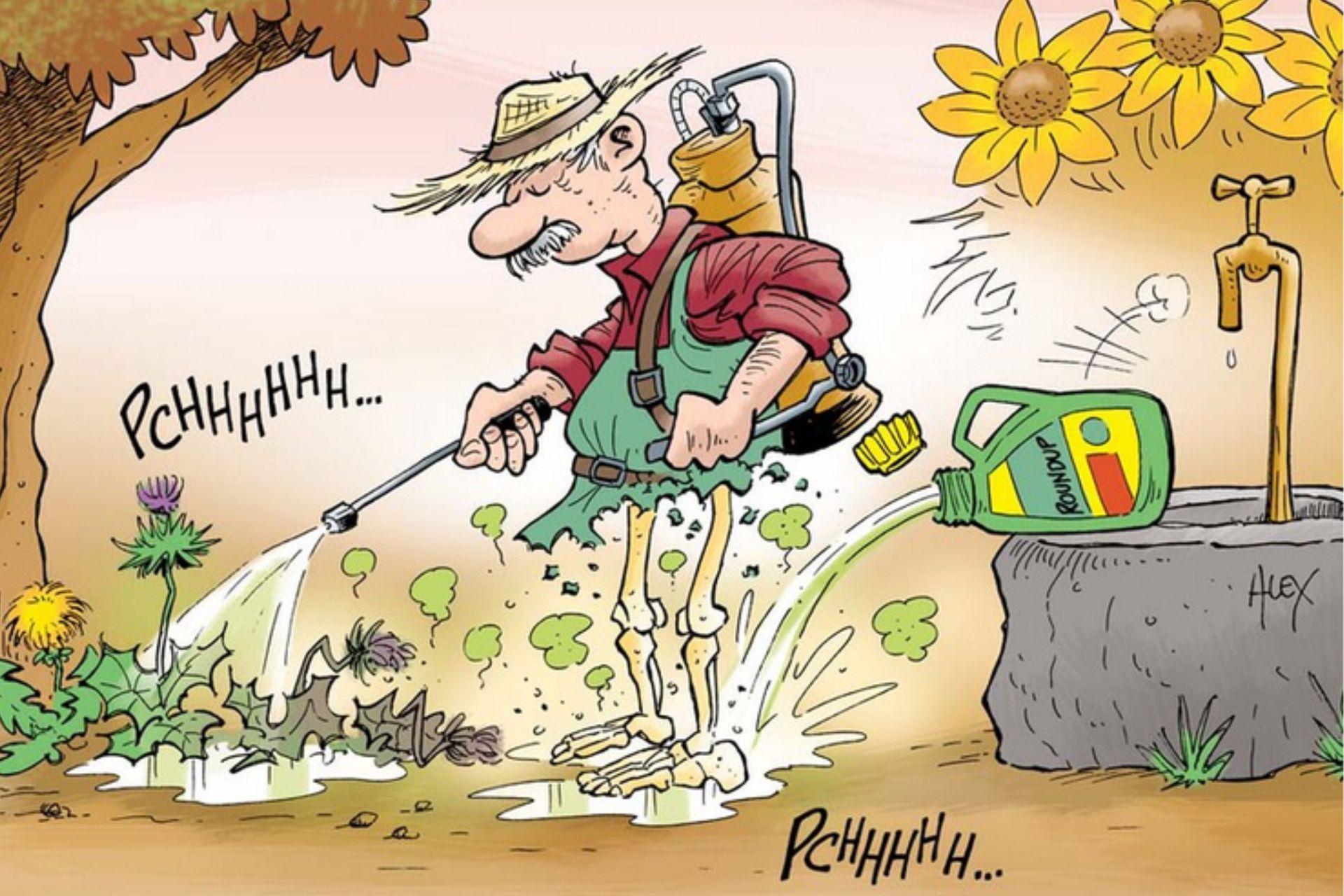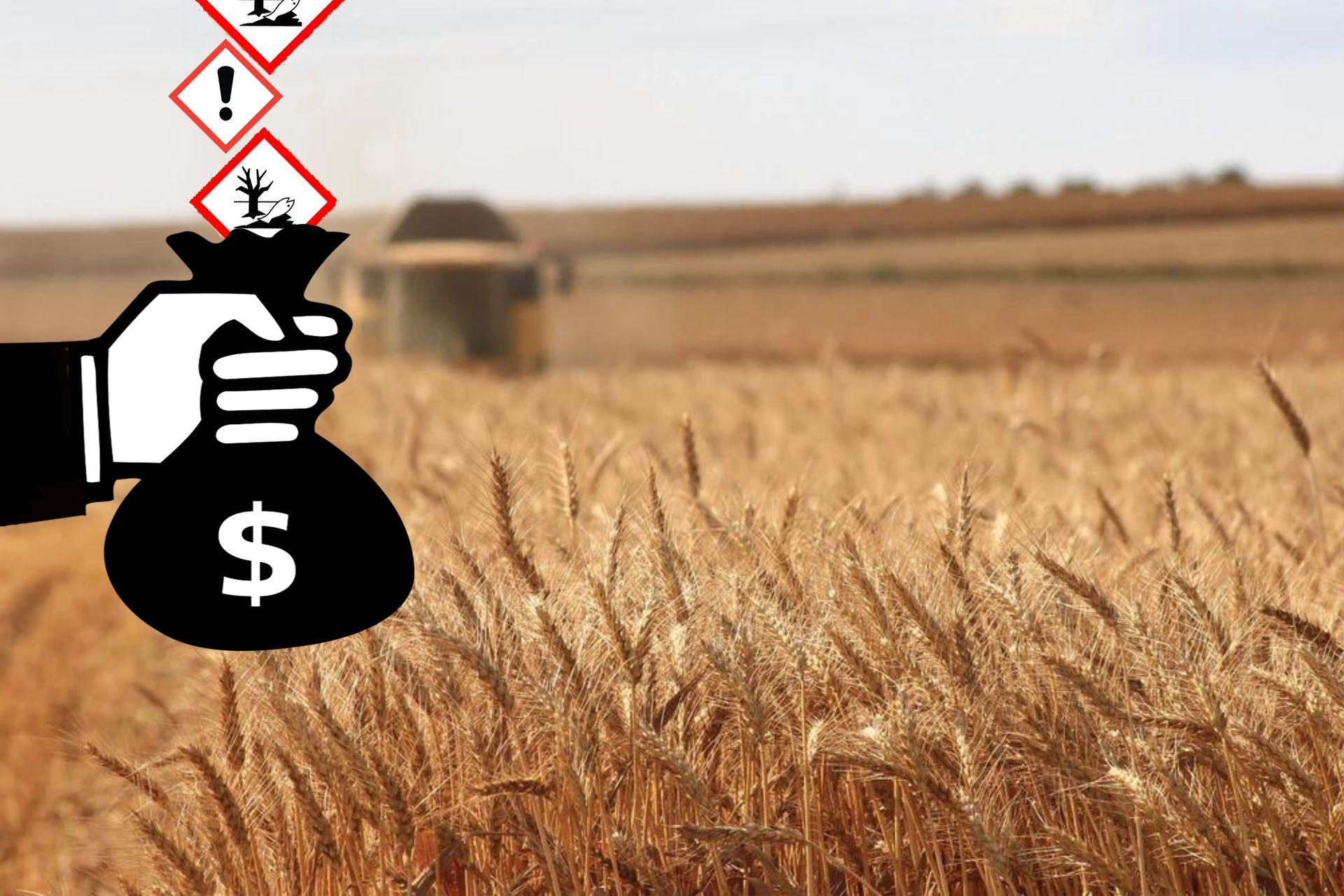
Recovering from herbicide damage and regenerating microbial fauna
Weeding is the practice of eliminating weeds (noxious weeds) and grasses that compete with crops. It is done manually, mechanically or chemically, even in multiple ways depending on the time and situation. The impact of this practice on the land and the environment may vary depending on how it is carried out.
Mechanical weeding can be done through machines such as tillers, hoes, harrows and shredders, so it is definitely more expensive and requires professionalism; on the other hand, chemical weeding that is done through the use of herbicides is less expensive but has a greater impact.
Although mechanical weeding causes more CO2 emission to the atmosphere as a result of diesel fuel consumption, generating 3 kg of carbon dioxide for every kg of diesel fuel combusted, chemical weeding affects water and soil pollution more.
From this it can be inferred that the main stress is that inflicted on the environment. Just think of the synthetic herbals in the 1930s that were toxic to mammals and those synthesized in the 1940s that were used not only in agriculture but also for war purposes in later years (see AgentOrange): 80 million liters of defoliant, produced by the sum of two herbicides, sprayed on vegetation in the Vietnam War to destroy forest and mangrove cover to enemy militias, uncover bombing targets, and annihilate food supplies of populations under siege. Those soils (two million hectares) remained defoliated for 30 years, but the story does not end there, as American industry operated for decades contaminating the Midland, Michigan and beyond to no end. We are reminded of this by the 2000 film starring Julia Roberts "Erin Brockovich - Strong as Truth" based on a true story.
Not to be outdone was Italy, which in Seveso, in 1976, in the production of toxic compounds for the synthesis of herbicides gave us a toxic cloud that contaminated 1,800 hectares of agricultural and livestock areas that still today, leading to health consequences, highlight unresolved problems.
Wherever the place of action or event, we should understand that air, earth, water are components of one organism, the planet, and that therefore everything is related, everything comes to us.

Now, that we may have learned how connected and dependent agriculture is on the environment, it is to the condition of it that we must look. Or rather, safeguard it. In short, we must safeguard our daily environment with healthy selfishness. If only out of necessity.
Risks and consequences of weed control
The farmer is interested in herbicide injury because it concerns the toxicity of nonweed plants, i.e., the crop for which he wants to intervene. Although his attention is directed to the end product from which he derives sustenance, he may find it useful to understand how and why the use of herbicides, i.e., weed killers, results in stress or even damage from plant contamination.
We will tell the farmer that herbicides, whether foliar-acting (systemic or contact) or preventive-acting (residual), are first and foremost pollutants that contaminate the plant through the sum of 3 processes:
- root uptake
- volatilization from the soil
- atmospheric deposition directly on leaves of particulates and gases
Processes differentiated according to the family to which the plants belong. For example, root uptake of the herbicide is greatest in cucurbits (pumpkins, zucchini, cucumbers, etc.) passing easily from the roots to the fruits via the vascular system, and least in tubers and tuberiform roots i.e., vegetables growing underground (potatoes, carrots, etc.). Weather conditions (temperature, rain, sunlight) also further influence weed control practice. Another factor is the persistence of herbicides: appreciated by farmers because it prolongs the period of action of the molecule, it can turn into a problem because it causes phytotoxicity on the next crop. Biological processes aside, regulations governing the sustainable use of pesticides such as herbicides with respect to the agronomic context (such as protection of pollinating insects, protection of water and related ecosystems, herbicide treatment resistance phenomena following repeated use of weed control, etc. ) can be a source of concern if not an obstacle for the already overworked farmer, who will find in the use of BioAksxter® formulations the solution to avoid or overcome weed-killing injuries and achieve the best production result.
The action of BioAksxter® used during weed control enhances plant life programs by eliminating plant stress. In the phenomena of weed toxicity, even due to accidental application, the depolluting action of BioAksxter® repotentiates the plant's self-purification capacity and enables rapid vegetative recovery, avoiding consequences that endanger its survival.
The case of glyphosate, king of herbicides since the 1970s

Unlike atrazine (the dreadful herbicide banned since 1992 in Europe, but not in the United States and much of the world) moreover replaced by terbuthylazine, glyphosate continues to reign supreme. Its global market is growing, an estimated $8.9 billion by 2026, but there are no estimates on the trend of the deadly cocktail of chemical molecules we are fed daily.
Glyphosate is a total systemic herbicide, it devitalizes plant organs by compromising their nutritional efficiency by desiccating vegetation and has been detected in the blood and urine of farmers, but hear hear hear, according to recent assessment by the European Commission, which monitors risks from the use of chemicals, it is not cangerogenic, mutagenic or toxic to reproduction. It is only toxic to aquatic organisms and the environment. This is a "real breakthrough" in European policies. Chemical fundamentalists are toasting man's power over nature.
The use of glyphosate is allowed under the Technical Standards for Environmentally Friendly Agriculture, yet "farmland where glyphosate has been used for years is like concrete," so we are told by farmers who preferred plant-soil balance to the choice of chemical doping. BioAksxter® in fact, beyond the choice made, overcomes the major damage due to the progressive destruction of the soil since the plant assimilates yes the herbicide, but the residue remains in the soil with disastrous effects on the microbial food chain. BioAksxter® repairs the soil microbial fauna by accelerating herbicide degradation. Unique in the world.